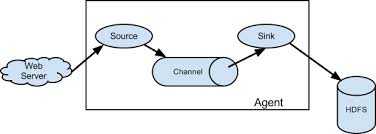
Azure Data Lake StorageĪzure Data Lake Storage is a managed, hyperscale repository for analytics data. This is similar to how those services would use Hadoop Distributed File System (HDFS).ĭata is typically ingested into Azure Storage through PowerShell, the Azure Storage SDK, or AzCopy. All HDInsight services can access files in Azure Blob storage for data cleaning and data processing. Although blobs can be logically grouped in blob containers, there are no partitioning implications from this grouping.Īzure Storage has a WebHDFS API layer for the blob storage. But a single blob is only served by a single server. Multiple blobs can be distributed across many servers to scale out access to them. An append blob is a great option for storing web logs or sensor data. This statement is true whether you're using a subset or all of the data.Īzure Storage has several types of blobs. You can store terabytes of data and still get consistent performance. As long as you're within your account limits, Azure Storage guarantees the same performance, no matter how large the files are. For most analytic nodes, Azure Storage scales best when dealing with many smaller files. See Scalability and performance targets for Blob storage for more information. Azure StorageĪzure Storage has specific adaptability targets. The files are usually in a flat format, like CSV.

Source data files are typically loaded into a location on Azure Storage or Azure Data Lake Storage. Publish output data to data stores, such as Azure Synapse Analytics, for BI applications to consume.įor more information on Azure Data Factory, see the documentation.You can also use Spark, Azure Data Lake Analytics, Azure Batch, or Azure Machine Learning for this step. Process and transform the data by using compute services such as HDInsight or Hadoop.These pipelines ingest data from disparate data stores. Create and schedule data-driven workflows.It allows you to create data-driven workflows for orchestrating and automating data movement and data transformation. Azure Data Factory is a cloud-based data integration service. Azure Data FactoryĪzure Data Factory provides orchestration capabilities in the form of platform as a service (PaaS). See also, Operationalize the data pipeline.

You can use Oozie to schedule jobs that are specific to a system, such as Java programs or shell scripts.įor more information, see Use Apache Oozie with Apache Hadoop to define and run a workflow on HDInsight. Oozie supports Hadoop jobs for Apache Hadoop MapReduce, Pig, Hive, and Sqoop. Oozie runs within an HDInsight cluster and is integrated with the Hadoop stack. Apache OozieĪpache Oozie is a workflow coordination system that manages Hadoop jobs. Orchestration is needed to run the appropriate job at the appropriate time.

Orchestration spans across all phases of the ETL pipeline. The following sections explore each of the ETL phases and their associated components. The use of HDInsight in the ETL process is summarized by this pipeline: With Azure HDInsight, a wide variety of Apache Hadoop environment components support ETL at scale.

Legacy ETL processes import data, clean it in place, and then store it in a relational data engine. Ultimately, the data is loaded into a datastore from which it can be queried. The data is collected in a standard location, cleaned, and processed. Extract, transform, and load (ETL) is the process by which data is acquired from various sources.


 0 kommentar(er)
0 kommentar(er)
